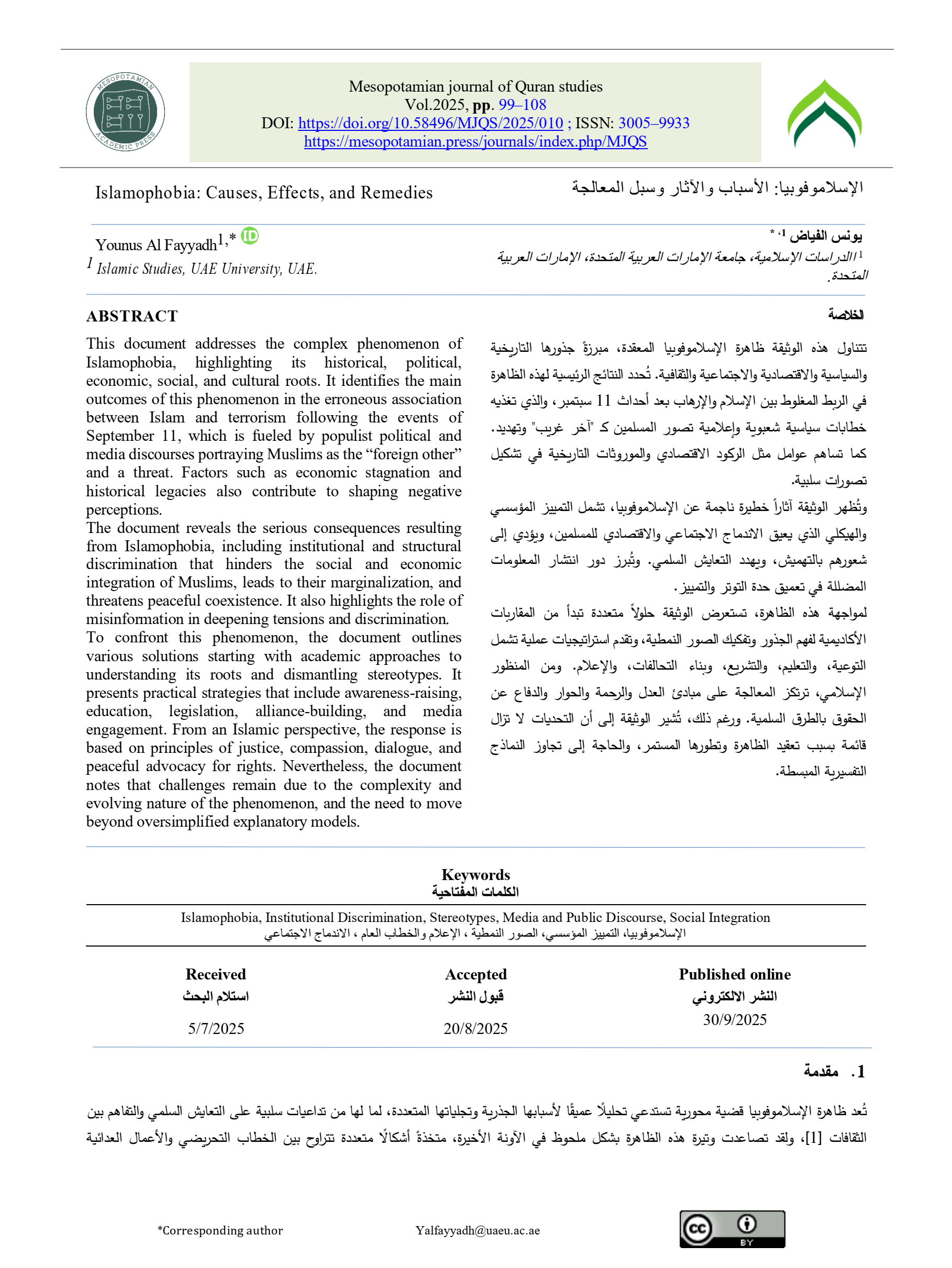Islamophobia: Causes, Effects, and Remedies
Main Article Content
Abstract
This document addresses the complex phenomenon of Islamophobia, highlighting its historical, political, economic, social, and cultural roots. It identifies the main outcomes of this phenomenon in the erroneous association between Islam and terrorism following the events of September 11, which is fueled by populist political and media discourses portraying Muslims as the “foreign other” and a threat. Factors such as economic stagnation and historical legacies also contribute to shaping negative perceptions.
The document reveals the serious consequences resulting from Islamophobia, including institutional and structural discrimination that hinders the social and economic integration of Muslims, leads to their marginalization, and threatens peaceful coexistence. It also highlights the role of misinformation in deepening tensions and discrimination.
To confront this phenomenon, the document outlines various solutions starting with academic approaches to understanding its roots and dismantling stereotypes. It presents practical strategies that include awareness-raising, education, legislation, alliance-building, and media engagement. From an Islamic perspective, the response is based on principles of justice, compassion, dialogue, and peaceful advocacy for rights. Nevertheless, the document notes that challenges remain due to the complexity and evolving nature of the phenomenon, and the need to move beyond oversimplified explanatory models
Article Details
Issue
Section

This work is licensed under a Creative Commons Attribution-ShareAlike 4.0 International License.
Deprecated: json_decode(): Passing null to parameter #1 ($json) of type string is deprecated in /home/u273879158/domains/mesopotamian.press/public_html/journals/plugins/generic/citations/CitationsPlugin.php on line 68
